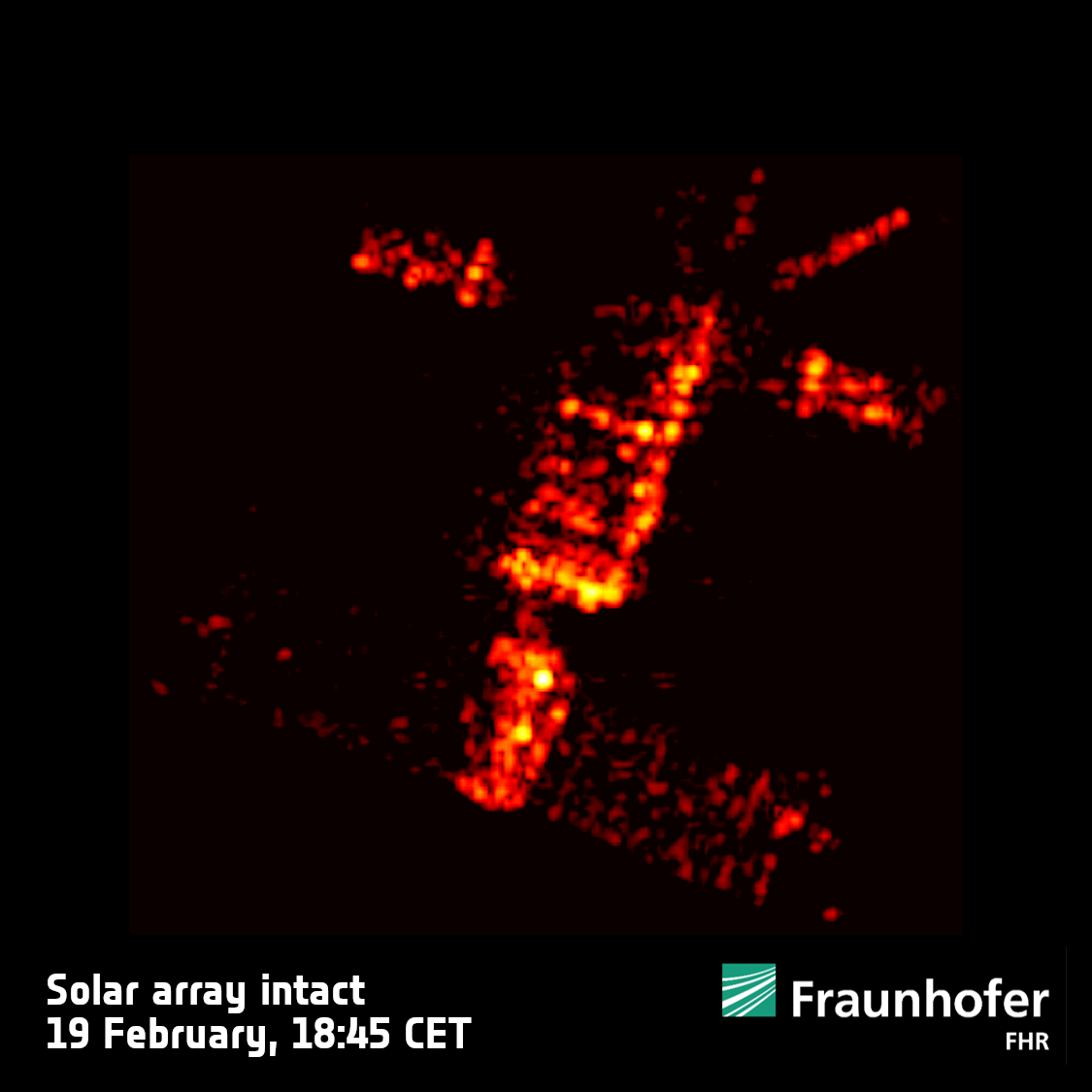This article has been reviewed according to Science X's editorial process and policies. Editors have highlighted the following attributes while ensuring the content's credibility:
fact-checked
trusted source
proofread
Image: ERS-2 buckles and bends during final farewell

Following a hugely successful mission and almost 30 years in orbit, ESA's ERS-2 reentered Earth's atmosphere at approximately 18:17 CET (17:17 UTC) on 21 February 2024.
Predicting the exact time and location of ERS-2's natural reentry was made more difficult by the lack of new observations of the satellite during its final revolutions around Earth.
This GIF combines some of the final images of ERS-2 tumbling through the sky. They were captured by the Tracking and Imaging Radar (TIRA) at the Fraunhofer Institute for High-Frequency Physics and Radar Techniques FHR in Germany.
TIRA's 34-m antenna tracked the satellite as it passed overhead for a few minutes on 19, 20, and 21 February. The final session took place around 8:00 CET on 21 February, still roughly 10 orbits before reentry.
By comparing the images from the three TIRA tracking sessions, we can see that ERS-2's solar array was already coming loose and no longer firmly attached to the rest of the satellite the day before re-entry.
When predicting a satellite's reentry trajectory, experts treat it as one rigid object until almost the very end. If ERS-2's solar array was loose and moving independently a day early, it may have caused the satellite to interact with the atmosphere in ways we did not expect.
Experts are now analyzing the data. If the buckling of the solar array is related to the fact that ERS-2's reentry took place slightly later than predicted, this research could help improve our forecasts of future natural reentries.
Provided by European Space Agency





















